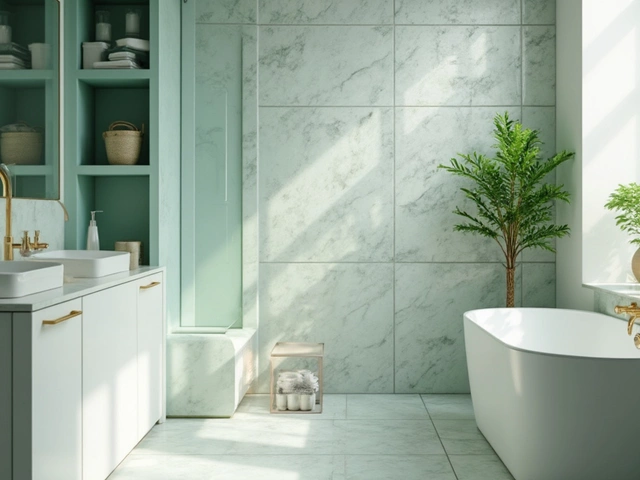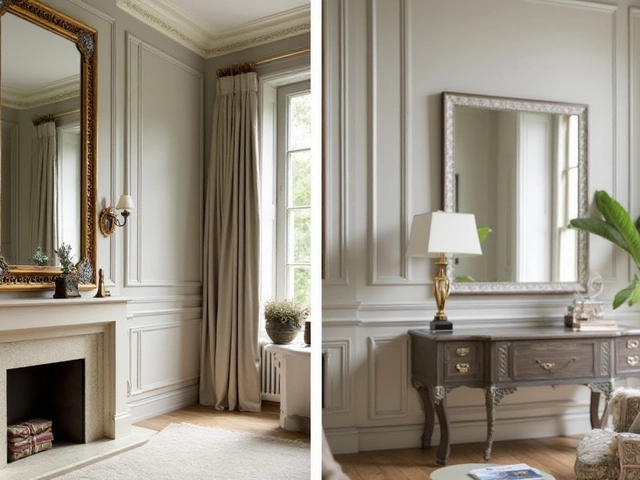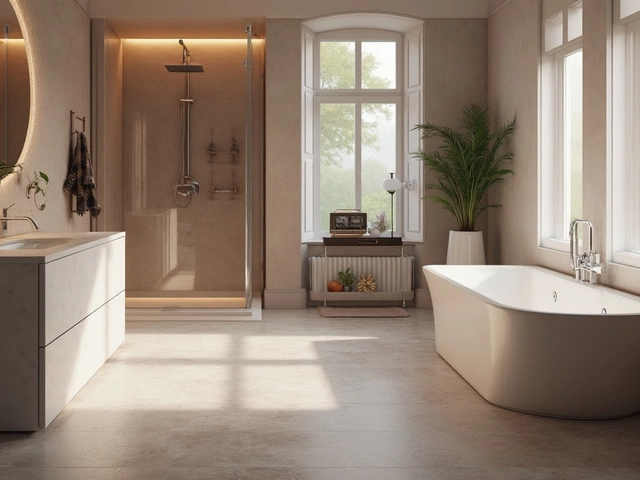Loveseat vs Couch: Which One Actually Fits Your Space?
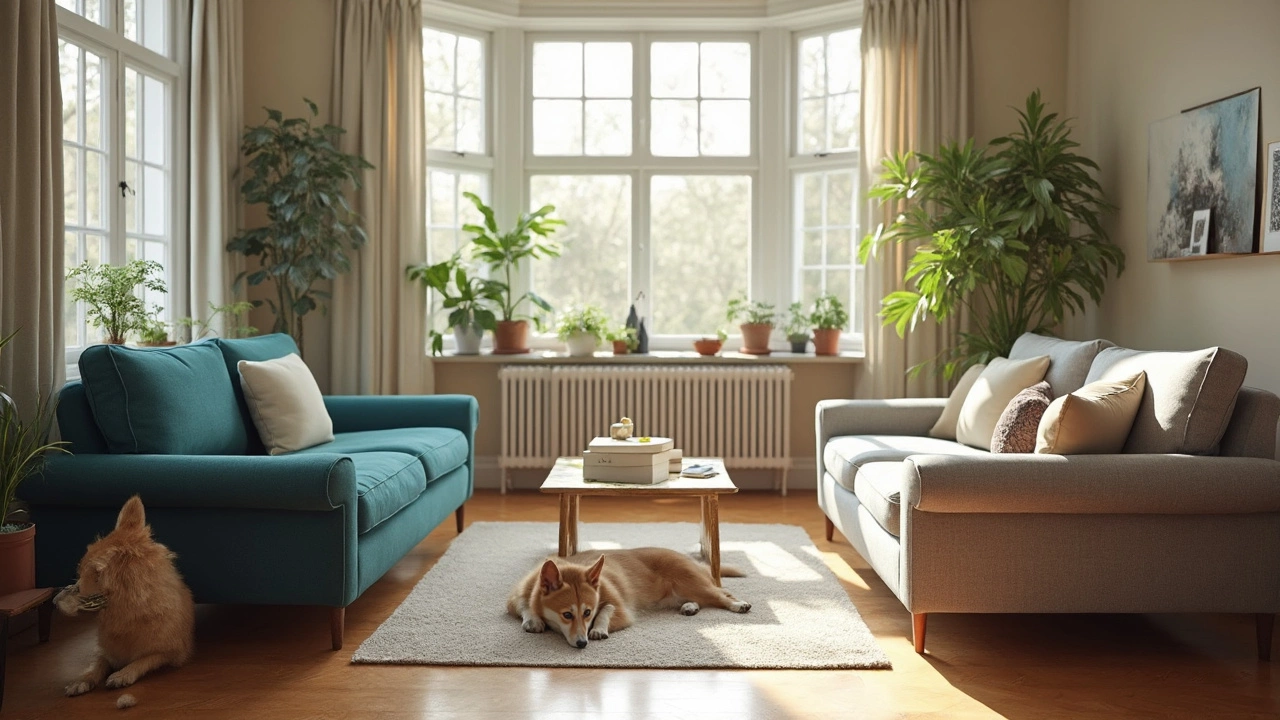
If you're wrestling with the loveseat vs. couch question, you're not alone. Picking seating isn't just about looks—it changes how you use your living room, and even how your place feels when friends drop by. Loveseats and couches both have their perks, but they fill pretty different roles.
Think about your space for a second: are you working with a tiny apartment, a studio, or do you have your eye on making a big living room feel cozy? Loveseats are champions for smaller rooms. They usually seat two people, and their smaller size means you can squeeze one almost anywhere: under a window, at the foot of a bed, or even in a hallway nook you’ve never known what to do with.
On the other hand, couches (those are your typical three-seaters or more) give you extra lounging room. Got movie nights, afternoon naps, or want to fit more guests? That’s where a full-sized sofa pulls ahead. The main thing is how you want to use your space day-to-day. Are you hosting family game nights or just want a spot to chill with a book? These little choices actually decide whether a loveseat or a couch fits better in your life.
- What Sets a Loveseat Apart from a Couch?
- When Size Makes All the Difference
- Comfort, Style, and How You Actually Use It
- Cost, Durability, and Maintenance
- Surprising Tips for Picking What’s Right for You
What Sets a Loveseat Apart from a Couch?
The main difference between a loveseat and a couch comes down to size and how many people can actually sit on them. A loveseat is usually designed for two people—think of it like a couples’ seat. It's perfect if you want something cozy for a smaller space. The average loveseat runs about 52 to 60 inches wide. Compare that to the classic couch, which is built to handle three people (or sometimes more with sectional versions) and usually measures anywhere from 75 to 90 inches wide.
Here's a simple breakdown to make it clear:
| Loveseat | Couch (Sofa) | |
|---|---|---|
| Typical Width | 52-60 inches | 75-90 inches |
| Seats | 2 people | 3+ people |
| Best for | Small spaces | Living rooms, families |
Another thing to notice: Loveseats are usually bought as part of a set. You’ll often see them paired with a matching sofa in a living room, making the space look pulled together. But some folks use them solo, in studios or bedrooms, where a full couch would take over the whole room.
Function matters, too. Couches are where you kick back for long stretches—think lying down to binge-watch TV. Loveseats are all about sitting upright, chatting, or reading. If you’ve got pets or kids who sprawl out, a couch will just make more sense. But if your space is small and you mostly want a spot for coffee with a friend, a loveseat fills the need without hogging square footage.
Oh, and here’s a fun bit: Some experts in furniture retail say more than half of city apartment owners pick loveseats over couches, just because of the tight squeeze. That alone tells you these two options aren’t just different by a few inches—they totally change how you set up a room.
When Size Makes All the Difference
Let’s get real about size, because it can make or break your furniture choice. A standard loveseat is usually between 48–72 inches wide, while a classic couch (think the ones you flop down on at friends’ places) runs closer to 78–90 inches long. That’s not just a few inches—it’s a game changer for apartment dwellers or anyone with a tricky floorplan.
If you measure your space and find that you’re working with anything less than eight feet of open wall, squeezing in a full-size sofa is going to be tough. With smaller rooms, every inch counts, and blocking a walkway or making your room feel cramped isn’t worth it. On the flip side, if you aim to fill an open-concept living area, a tiny loveseat will look lost, like it wandered in by accident.
"When picking between a loveseat and a full-sized sofa, measure not just the space for the furniture, but also leave at least 18 inches in front for coffee tables, and 30–36 inches for walkways. It makes traffic flow, and your space will feel way bigger."
— Jenna Waterman, Interior Designer
Most people forget this, but you need wiggle room. That’s why experts suggest drawing out a quick floor plan or even laying down painter’s tape where you want the sofa or loveseat to live. It gives you a better feel for how tight things will be—before you invest.
| Seating Type | Typical Width (inches) | Best Room Sizes |
|---|---|---|
| Loveseat | 48–72 | Small living rooms, apartments, bedrooms |
| Couch | 78–90 | Medium to large living rooms, family rooms |
Here’s a quick tip: if you’re in a rental or plan to move soon, loveseats are lighter and way easier to fit through doors or up flights of stairs. Couches, especially sectionals, can be a total hassle in old buildings or tiny hallways.
Bottom line: Size isn’t just about fitting the furniture; it’s about making sure you can actually live in your space. Choosing a loveseat or a couch based on your room’s real-life needs, not just what looks good in the store, is what makes the difference.
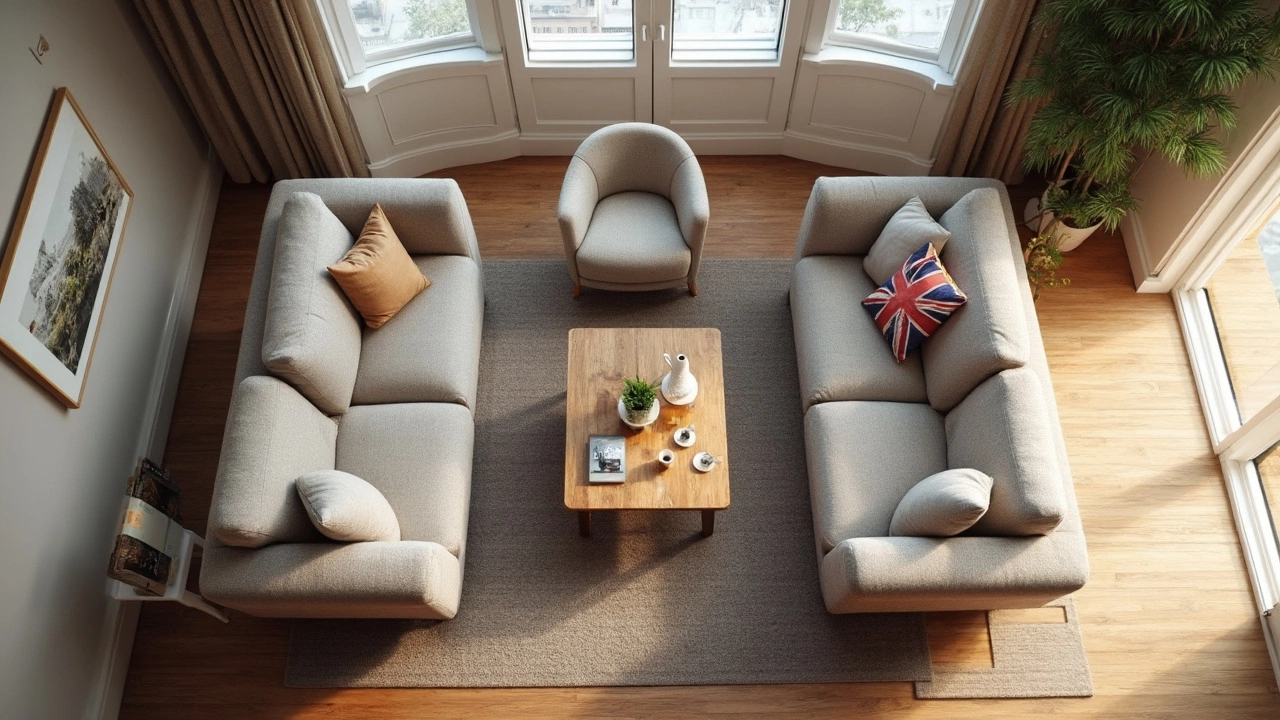
Comfort, Style, and How You Actually Use It
When it comes to comfort, the main thing is how you plan to lounge. If you're a "stretch out and nap" type, a couch usually wins—more surface, more space to sprawl. Loveseats are ideal if you mostly sit upright or just want a cozy spot for two. The stuff inside matters too: higher-end sofas (loveseats included) tend to have denser foam that lasts longer and feels better after months of Netflix binges. Cheap, soft cushions flatten out fast, leaving you stuck on lumpy spots.
As for style, loveseats can add a sense of balance—even in bigger rooms. They come in a ton of designs: classic tufted looks, clean-lined modern frames, or even those ultra-compact pieces perfect for entryways. Couches are a style magnet for bigger spaces, but they can also dominate a small room and make it feel cramped. A lot of folks combine the two—pairing a couch with a loveseat—to split up a large room or make a corner feel welcoming.
Think about how you actually use your living space. Here are some quick scenarios:
- If you entertain often, a couch gives you more seating and keeps everyone in the same area for games or movies.
- If you live alone or with one other person, a loveseat can save space without sacrificing comfort, and it’s way easier to rearrange or move.
- Got pets or kids? Sturdy fabric (like microfiber or leather) is a must for both, whether it’s a loveseat or couch.
According to a recent survey from the American Home Furnishings Alliance, about 63% of people said comfort was their number one priority in choosing a new sofa or loveseat—style was a close second. That means it’s smart to actually sit and test furniture in person if you can.
Speaking of real-life use: spill-resistant fabrics and removable covers aren’t just marketing buzzwords. They seriously make a difference when life gets messy, and they’re available on both couches and loveseats these days.
Cost, Durability, and Maintenance
When it comes to cost, a loveseat almost always beats a bigger couch. You’re using less material and less space, so the price tag drops. A decent fabric loveseat can start around $300, while an average-sized couch usually runs from $500 up, easily crossing into the thousands if you want something fancy or extra plush.
That price difference might tempt you, but durability matters too. Quality isn’t just about size—it’s about what’s inside. Both loveseats and couches can use the same hardwood frames and high-density foam. But here’s the thing: because loveseats often see less action (fewer people, shorter length, less jumping around by kids or pets), they sometimes last longer before sagging or getting stains. Smaller size also makes it easier to clean under and around a loveseat.
Maintenance is another thing to think about. Both options can be easy to clean if you pick the right fabric. Microfiber and leather are two top choices since they handle spills and grime better than pure cotton or linen. Reversible cushions on some loveseats and couches also double your time between cleanings. But with less width, a loveseat is just plain faster to vacuum or wipe down.
Here’s a quick comparison of what you might expect for cost and lifespan (your experience may vary based on brand and abuse):
| Type | Average Price (USD) | Expected Lifespan (years) | Typical Width |
|---|---|---|---|
| Loveseat | $300-1200 | 7-15 | 50"-65" |
| Couch | $500-2500 | 7-15 | 75"-96" |
If you move a lot, keep in mind that loveseats can slide through narrow doorways and stairwells way easier than a full-on sofa. They’re lighter, which means less stress (and back pain) when you have to rearrange or deep clean.
Want your sofa or loveseat to last longer? Here are some actionable tips:
- Use arm covers or wash slipcovers every couple of months—this saves fabric from sweat and oils.
- Vacuum crumbs and pet hair weekly to keep dirt from grinding into the upholstery.
- Rotate cushions regularly so the same spots don’t wear out first.
- Keep your furniture out of direct sunlight to avoid faded spots, especially with fabric sofas.
The bottom line: a loveseat usually costs less and is a breeze to maintain in a small space. A couch is a bigger investment but pays off if you need the room—or host a crowd on the regular.

Surprising Tips for Picking What’s Right for You
There’s more to picking between a loveseat and a couch than just measuring your room. Here are some tips that could save you from major furniture regrets down the road.
- Test Before You Buy: Always try to sit or even lie down on the sofa or loveseat in the store. Comfort changes with depth and cushion filling, and it’s weirdly easy to end up with something too stiff or shallow for your taste. What feels comfy to someone else could feel like a church pew to you.
- Think About Your Routine: Do you mainly have one or two people lounging, or do you host movie nights with a full crew? A lot of people forget this and end up with a too-big couch that barely gets used, or a loveseat that can’t fit everyone. Your day-to-day habits are more important than how the furniture looks in a catalog.
- Pay Attention to Doorways and Hallways: Surprisingly, more than 15% of sofa returns in the U.S. happen because folks can’t actually get them through their front door. Measure doors, stairwells, and any tight corners before you choose. Write those numbers down and take them with you when shopping.
- Modular Options Can Bridge the Gap: If you want flexibility, check out modular sofas or loveseats. These let you add or remove sections as your space or needs change—perfect for renters or people who like to rearrange their rooms just for fun.
- Fabric and Color Matter Long-Term: Light-colored fabrics look great in magazines, but show spills and wear faster. Darker shades or washable covers are a lifesaver if you’ve got kids, pets, or clumsy roommates. Leather sofas and loveseats are usually easier to wipe down, but they can feel sticky in warm weather.
Here’s a quick table to help match your space and lifestyle to the best option:
| Loveseat | Couch | |
|---|---|---|
| Seats | 2 | 3 or more |
| Best for Space | Small rooms, corners, bedrooms | Living rooms, open floor plans |
| Hosting | Couples, small hangouts | Groups, movie nights, naps |
| Flexibility | Works as accent piece | Can anchor a room |
So, don’t just go with what everyone else has. Take your space, your habits, and even your cleaning patience into account. That’s how you land the sofa or loveseat you won’t secretly want to swap out in a year.


